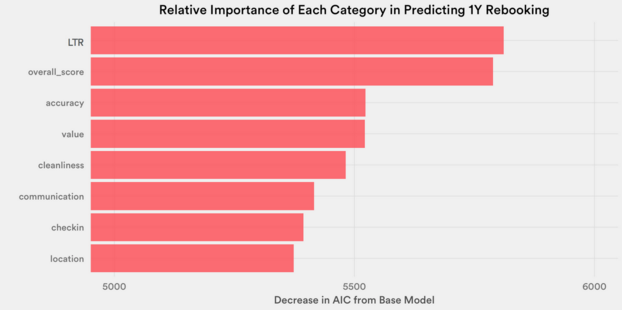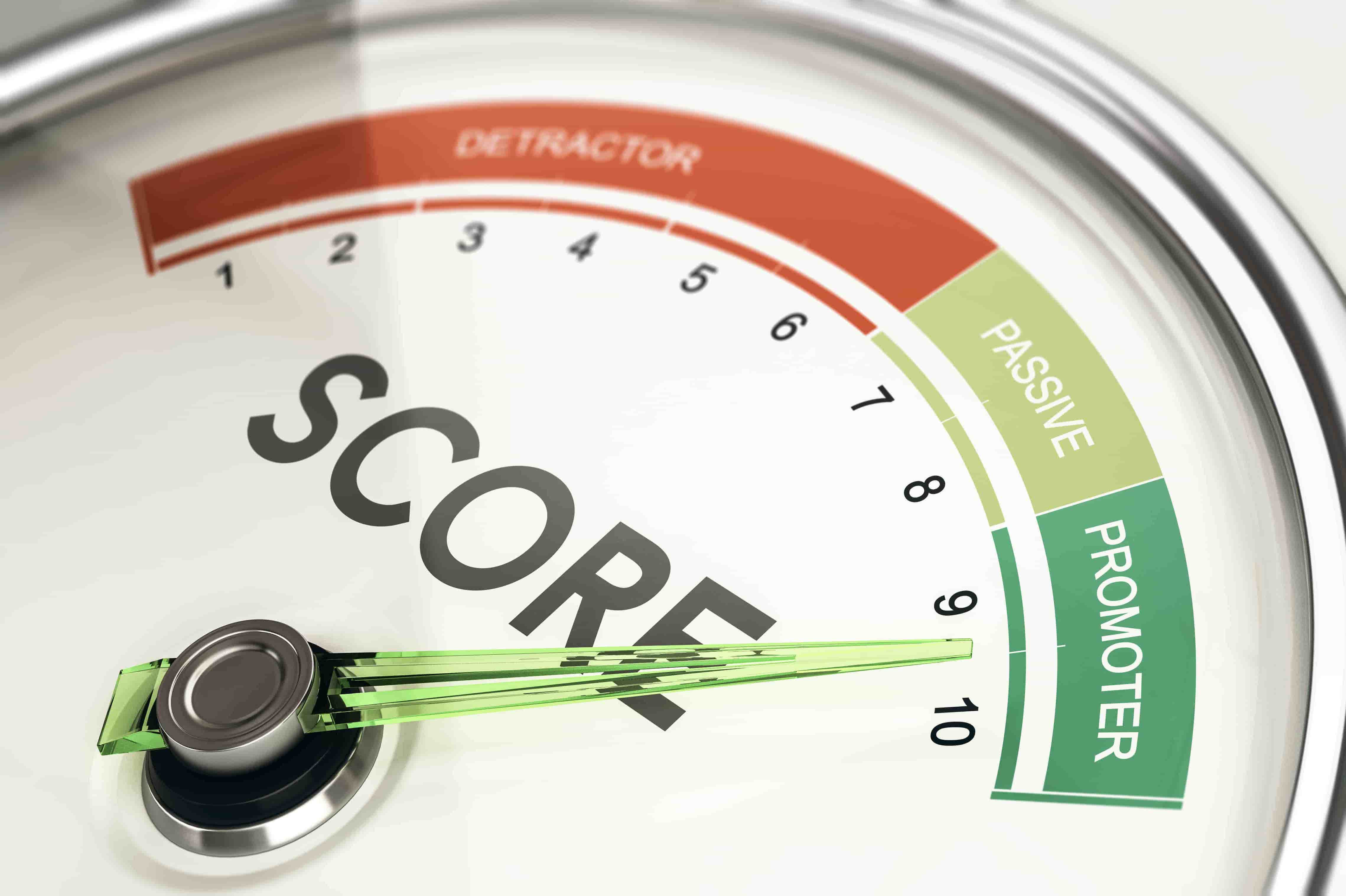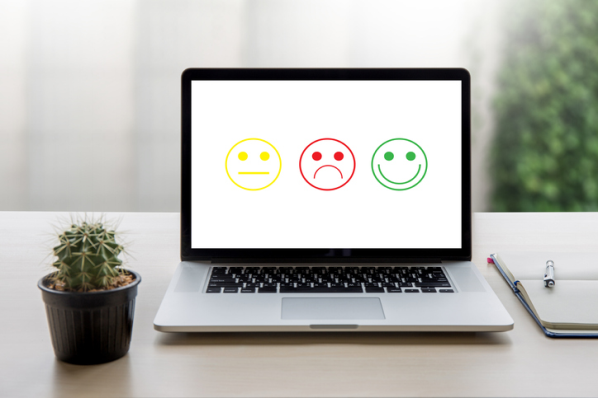When I'm preparing to make a big decision — on a new apartment, a different job, or a vacation destination — I usually do two things:
I consult the internet to conduct research, and I ask my friends and family what they'd recommend.
Recommendations from friends and family and online reviews are incredibly valuable to your customers. In fact, 91 percent of people regularly or occasionally read online reviews, and 84 percent trust online reviews as much as a personal recommendation.
Think about that for a second. This statistic means that even if you do everything right — from your logo to your blog posts to your marketing email subject lines — one customer's bad experience with your brand could cost you new business. In fact, customers are more likely to talk about a bad experience with your brand than a good one — and they tell almost 3X as many people when it happens.
Nowadays, with the help of social media, your customers can quickly share recommendations — and negative reviews — with their entire networks with just the press of a button. This makes collecting customer feedback and identifying headaches a quick process which is not only to prevent bad customer experiences and reviews but also to make your customers so happy that they recommend your brand to friends and family.
This is where the NPS®, or Net Promoter Score, comes in.
What is Net Promoter Score (NPS)?
NPS stands for Net Promoter Score. It's a customer satisfaction benchmark that measures how likely your customers are to recommend your business to a friend.
NPS is a typical benchmark that companies use to measure, evaluate and improve customer loyalty. NPS is different from other benchmarks, such as customer satisfaction score or customer effort score, in that it measures a customer's overall sentiment about a brand, versus their perception of a singular interaction or purchase. If you're looking to take it one step further to find actionable insights to improve customer experience based on overall sentiment, Reputation Score.
Note: You can also gather NPS results from your employees to understand their satisfaction and happiness working for your company.
How to Calculate NPS
- Survey your customers and ask them, "On a scale of 0 to 10, how likely are you to recommend us to a friend?"
- Categorize respondents according to their score: Scores 0-6 are Detractors, scores 7-8 are Passives, and scores 9-10 are Promoters.
- Disregarding the Passives, subtract the percentage of Detractor responses from the percentage of Promoter responses to determine your Net Promoter Score. This score can range from -100 to 100.
.png)
Free Customer Service Metrics Calculator
Calculate your business's key metrics and KPIs for customer support, service, and success with this free template.
- Customer Acquisition Cost
- Customer Lifetime Value
- Customer Satisfaction Score
- And More!
Download Free
All fields are required.
.png)
To calculate your NPS, you first have to survey your customers. The NPS is the typical answer to the question "On a scale of 0 to 10, how likely are you to recommend to a friend?" The responses to this question can be categorized into three groups:
NPS Promoter
Customers who answer the question with 9-10. As you might be able to infer from the names of these groups, promoters are enthusiastic, loyal customers who will tell their friends about your business and bring in new customers.
NPS Passive
Customers who answer the question with 7-8. Passives are indifferent and could become promoters — or they could switch to your competition.
NPS Detractor
Customers who answer the question with 0-6. Detractors are unhappy customers, and not only are you at risk of losing them, but they could also do damage to your brand by sharing their bad experiences with other people.
To calculate Net Promoter Score, subtract the percentage of detractors (customers who wouldn't recommend you) from the percentage of promoters (customers who would recommend you).
Free Net Promoter Score Calculator
Access the Customer Service Metrics Calculator
NPS Survey
The key to achieving a high NPS is having a greater number of promoters than detractors — a lot more.
NPS Analysis: Understanding Your Net Promoter Score
Imagine you surveyed 100 customers. If 40% were detractors and only 50% were promoters, your NPS would be 10 (50% - 40% = 10). But if you surveyed your 100 customers and only 20% were detractors, your NPS score would jump up to 30 — representing a 20% greater chance your customers will recommend you to a friend.
Consistently surveying customers and learning how they talk about your company to friends and family helps identify risks, areas of opportunity, and ways to improve. That's why we recommend including space for customers to comment and leave qualitative feedback about how you can improve. From there, you can source specific customer pain points and ways to improve their experience.
Quantitative feedback is the response to the 0-10 rating question we mentioned above. Qualitative feedback comes from follow-up questions after that rating has been provided. These questions dive deeper into the “why” behind a customer's initial NPS rating. Additionally, you may ask open-ended questions about the customer’s experience with your product or service and the features they use most frequently.
Let's take a look at some examples of these NPS survey questions you can ask. You'll notice the first three questions relate to the quantitative findings since they're based on a scale of 1-10. The final four survey questions are open-ended and relate back to the qualitative findings, or the "why" behind the ratings given.
NPS Survey Questions
- On a scale of 0-10, how likely are you to recommend our business to a friend or colleague?
- On a scale of 0-10, how likely are to recommend (product/ service name) to a friend or colleague?
- On a scale of 0-10, how likely are you to recommend (company name) as a potential workplace to your friends?
- What is the primary reason for your score?
- How can we improve your experience?
- Which product/ service features do you value and use the most?
- What was missing or disappointing in your experience with us?
- What can we do to make you a happier customer?
Now, let's take a look at why NPS is so important for the success of your business.
Why Is NPS Important?
1. It measures customer loyalty.
Customer NPS helps brands evaluate customer loyalty — and the likelihood of them recommending you to a friend. It also helps evaluate the likelihood of customers churning — canceling their subscription or not repurchasing and seeking out a product or service from a different company.
While you want to attract and convert new customers, retaining and empowering existing customers has an even higher ROI. Needless to say, identifying customers at risk of churning is a key aspect of making this possible, and measuring customer NPS over time helps companies do just that.
Identifying Changes in NPS
Changes in the overall NPS give companies an idea of how likely it is the average customer will recommend you to a friend. But changes in the breakdown of scores — between promoters, passives, and detractors — also give customer success teams an indication of which direction the overall NPS is trending.
For example, if the number of detractors decreases and the number of passives increases, that could mean that customer perception is trending positively. But a decrease in promoters and an increase in passives, on the other hand, could indicate a risk of customer churn and negative reviews.
Changes in the customer NPS could be a good indicator — or red flag — of the current state of customer satisfaction — and the potential risk of churn.
Mention used NPS surveys to cut its churn rate in half — in just two months. Here is the NPS survey they sent out:

Based on the responses received, Mention sent out custom emails and offers to customers depending on their level of satisfaction (or lack thereof).
As you can see in the image below, promoters were offered a discounted upgrade to their product.

Then, passives received an extended free trial period, and detractors were thanked for their honesty — and asked how things could be improved.

2. It identifies ways to improve.
Customers might answer the NPS question with a low score, or even a 0. It's tough when that happens — especially if it happens more than once — but it also presents an opportunity to zero in on customer feedback and make product or service improvements accordingly.
That's why we suggest an NPS survey with additional space for customers to leave specific comments about why they gave the score they did. That way, you can evaluate qualitative feedback about customers who might pinpoint specific things you can change to improve their experience with your product or service.
Sure, not all feedback will be helpful — there will always be trolls on the internet — but specific notes about bugs, poor user experience (UX), or a bad call with a customer success manager could be quickly routed to the responsible team to address.
.png)
Free Customer Service Metrics Calculator
Calculate your business's key metrics and KPIs for customer support, service, and success with this free template.
- Customer Acquisition Cost
- Customer Lifetime Value
- Customer Satisfaction Score
- And More!
Download Free
All fields are required.
.png)
At Magoosh, an online standardized test prep resource, NPS helped flag a customer complaint that contributed to a lower score and identified where to improve for the customer. Once a mismatched algorithm was identified in NPS data, Magoosh could double down on making it as helpful and accurate as possible for its customers, and its NPS improved by nine points as a result.
3. It boosts referral marketing.
Customer NPS gives companies an idea of how likely they are to earn recommendations from happy customers — which, as it turns out, carry a lot of weight.
- Consumers who rate a company’s service as “good” are 38% more likely to recommend that company.
- Nearly 70% of respondents were more likely to purchase a product if a friend talked about it on social media or email.
- Referred customers have a 16% higher lifetime value — and greater ROI — than others.
Companies can harness the power of referral marketing by asking for customer case studies, testimonials, and online reviews to tempt potential new customers. And brand ambassador and incentive programs can, in turn, reward customer loyalty with gift cards, swag, or discounts.
Referral marketing can be a symbiotic arrangement between brands and customers, but you need to make sure you have happy customers first, and NPS results can help identify those happy customers.
Airbnb used NPS data to predict future interactions with the service — such as rebooking or recommending to a friend — for over 600,000 users. It found that customers with an NPS score of 10 (promoters) were 13% more likely to rebook and 4% more likely to refer a friend than detractors.
Then, Airbnb analyzed other sources of customer feedback — such as host reviews and value ratings — and determined the NPS as the biggest predictor of future rebooking and referrals.
4. It helps you prioritize reaching out to detractors.
Detractors are those NPS survey respondents between a score of 0-6, indicating that they would likely not be willing to recommend your product or service to others. And just as investing in your promoters can offer dividends for your company's growth, focusing on detractors is important, too.
When you receive NPS results, divide the responses into three categories, and analyze the reasons why respondents chose their answers. It's important to follow up with your valued customers, but particularly if they flag a problem or issue they're having using your product or service.
It could be a matter of misunderstanding or user error, or it could be a bigger-scale complaint that you alone can't solve, but by following up with detractors, you can make them feel heard and valued, and might make them less likely to churn — or worse, tell others that they shouldn't purchase from you.
Here at HubSpot, we've built a Slackbot that pulls in NPS responses and details into a Slack channel that automatically tag's the customer's point of contact, so they can respond to feedback as it comes in, and collaborate with people on the product, customer support, and customer success teams to work collaboratively to solve the issue:

Use NPS to Grow Better
Once you analyze NPS data and (hopefully) find many happy promoters, don't stop there. Open up a dialogue with happy customers and see if you can engage them in a referral program to keep them satisfied — and acquire more customers in the process.
Net Promoter, Net Promoter System, Net Promoter Score, NPS and the NPS-related emoticons are registered trademarks of Bain & Company, Inc., Fred Reichheld and Satmetrix Systems, Inc.
Editor's note: This post was originally published in July 2017 and has been updated for comprehensiveness.


![→ Download Now: Customer Service Metrics Calculator [Free Tool]](https://no-cache.hubspot.com/cta/default/53/e24dc302-9dc2-466f-a5ca-ab4e08633c0f.png)


![How I Calculate Net Promoter Score [Formula & Examples]](https://knowledge.hubspot.com/hubfs/how-to-calculate-nps-1-20241104-8187591.webp)








